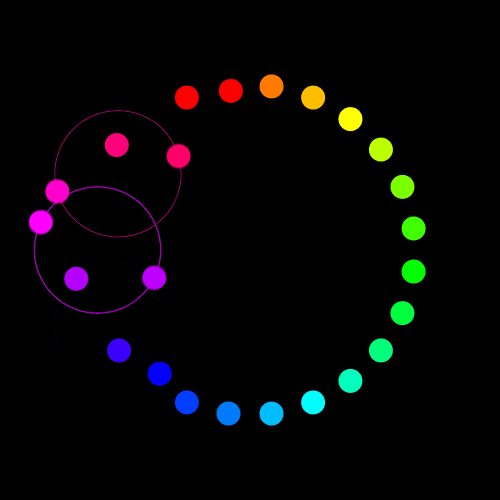
Linguistic Categorization:Prototypes in Linguistic Theory
副标题:无
分类号:H003
ISBN:9787560023700
微信扫一扫,移动浏览光盘
简介
当代国外语言学与应用语言学文库》首批54种自2000年9月问世以来,取得很大成功,首印5000套供不应求,10月份便分开重印6000套。能在短短的几个月内出版发行如此宏大规模的语言学著作,这在我国学术出版发行史上是不多见的。自出版以来,许多单位和个人争相订购,研究生和大学生生把《文库》视为良师益友,教师无论老中青都把《文库》视为知识更新的源泉。实践证明,外研社推出的《文库》受到了国内语言学界和外语教学界的普遍好评,它将成为推动我国语言学教学与研究和外语教学与研究的一个宝库。
在成功出版《文库》首批54种的基础上,外研社现在又推出《文库》第二批58种。《文库》第二批具有五大特色:一、由58部英文原著组成,所覆盖的学科从首批的26个增加到现在的33个,新增学科包括语言学史、语言哲学、认知语言学、人类语言学、语言的起源、语法化学说等,能更广泛地满足读者的需求;二、收入了当代语言学大师索绪尔、萨丕尔、布龙菲尔德、韩礼德、乔姆斯基、奥斯汀、格莱斯、利奇等名家的最有影响的伤口具有更高的权威性;三、增加了牛津大学出版社、哈佛大学出版社等世界知名出版社出版的语言学经典著作;四、依然配有专家导读,专家的队伍比首批更为强大;五、世界著名语言学家乔姆斯基教授和我国著名语言学家沈家煊教授作序。
本《文库》是一个大型的、开放性的系列丛书,它将对我国语言教学与研究和外语教学与研究起到积极的推动作用。今后,外研社还将继续引进,争取把国外最新的、最具影响的语言学和应用语言学著作不断地奉献给广大读者。
目录
preface by halliday
王宗炎序
preface by chomsky
沈家煊序
导读
preface
typographical conventions
1. the categorization of colour
1.1 why colour terms?
1.2 arbitrariness
1.3 an alternative approach: focal colours
1.4 autonomous linguistics vs. cognitive linguistics
2. the classical approach to categorization
2.1 aristotle
2.2 the classical approach in linguistics: phonology
2.3 the classical approach in semantics
3. prototype categories: i
3.1 wittgenstein
3.2 prototypes: an alternative to the classical theory
. 3.3 basic level terms
3.4 why prototype categories?
3.5 a note on fuzziness
3.6 some applications
4. prototype categories: ii
4.1 prototypes
4.2 prototypes and schemas
4.3 folk categories and expert categories
4.4 hedges
5. linguistic and encyclopaedic knowledge
5.1 domains and schemas
5.2 frames and scripts
5.3 perspectivization
5.4 frames and scripts in language comprehension
5.5 fake
5.6 real
6. polysemy and meaning chains
6.1 monosemous and polysemous categories
6.2 an illustration: climb
6.3 over
6.4 some problems
7. category extension: metonymy and metaphor
7.1 metonymy
7.2 metaphor
8. polysemous categories in morphology and syntax
8.1 the diminutive
8.2 the past tense
8.3 a note on yes-no questions
9. polysemous categories in intonation
9.1 the problem of intonational meaning
9.2 the meanings of falling and rising tones
9.3 high key
10. grammatical categories
10.1 words, affixes, and clitics
10.2 grammatical categories
10.3 the semantic basis of grammatical categories
11. syntactic constructions as prototype categories
11.1 constructions
11.2 the possessive genitive
11.3 the transitive construction
11.4 the transitive construction: more marginal members
11.5 metaphorical extension of syntactic constructions
11.6 a comparison with german
11.7 concluding remarks
12. prototype categories in phonology
12.1 phoneme categories
12.2 the gradience of phoneme categories
12.3 the syllable as a construction
13. the acquisition of categories
13.1 hypothesized acquisition routes
13.2 grammatical categories
13.3 conceptual development
13.4 word meanings
14. recent developments (1995)
14.1 overview of prototypicality
14.2 prototypes and basic level terms
14.3 polysemy and the two-level approach
14.4 two illustrations: in and round
14.5 polysemy and the network model
14.6 the historical perspective
14.7 epilogue: on zebras and quaggas
references
index
文库索引
王宗炎序
preface by chomsky
沈家煊序
导读
preface
typographical conventions
1. the categorization of colour
1.1 why colour terms?
1.2 arbitrariness
1.3 an alternative approach: focal colours
1.4 autonomous linguistics vs. cognitive linguistics
2. the classical approach to categorization
2.1 aristotle
2.2 the classical approach in linguistics: phonology
2.3 the classical approach in semantics
3. prototype categories: i
3.1 wittgenstein
3.2 prototypes: an alternative to the classical theory
. 3.3 basic level terms
3.4 why prototype categories?
3.5 a note on fuzziness
3.6 some applications
4. prototype categories: ii
4.1 prototypes
4.2 prototypes and schemas
4.3 folk categories and expert categories
4.4 hedges
5. linguistic and encyclopaedic knowledge
5.1 domains and schemas
5.2 frames and scripts
5.3 perspectivization
5.4 frames and scripts in language comprehension
5.5 fake
5.6 real
6. polysemy and meaning chains
6.1 monosemous and polysemous categories
6.2 an illustration: climb
6.3 over
6.4 some problems
7. category extension: metonymy and metaphor
7.1 metonymy
7.2 metaphor
8. polysemous categories in morphology and syntax
8.1 the diminutive
8.2 the past tense
8.3 a note on yes-no questions
9. polysemous categories in intonation
9.1 the problem of intonational meaning
9.2 the meanings of falling and rising tones
9.3 high key
10. grammatical categories
10.1 words, affixes, and clitics
10.2 grammatical categories
10.3 the semantic basis of grammatical categories
11. syntactic constructions as prototype categories
11.1 constructions
11.2 the possessive genitive
11.3 the transitive construction
11.4 the transitive construction: more marginal members
11.5 metaphorical extension of syntactic constructions
11.6 a comparison with german
11.7 concluding remarks
12. prototype categories in phonology
12.1 phoneme categories
12.2 the gradience of phoneme categories
12.3 the syllable as a construction
13. the acquisition of categories
13.1 hypothesized acquisition routes
13.2 grammatical categories
13.3 conceptual development
13.4 word meanings
14. recent developments (1995)
14.1 overview of prototypicality
14.2 prototypes and basic level terms
14.3 polysemy and the two-level approach
14.4 two illustrations: in and round
14.5 polysemy and the network model
14.6 the historical perspective
14.7 epilogue: on zebras and quaggas
references
index
文库索引
Linguistic Categorization:Prototypes in Linguistic Theory
- 名称
- 类型
- 大小
光盘服务联系方式: 020-38250260 客服QQ:4006604884
云图客服:
用户发送的提问,这种方式就需要有位在线客服来回答用户的问题,这种 就属于对话式的,问题是这种提问是否需要用户登录才能提问
Video Player
×
Audio Player
×
pdf Player
×


